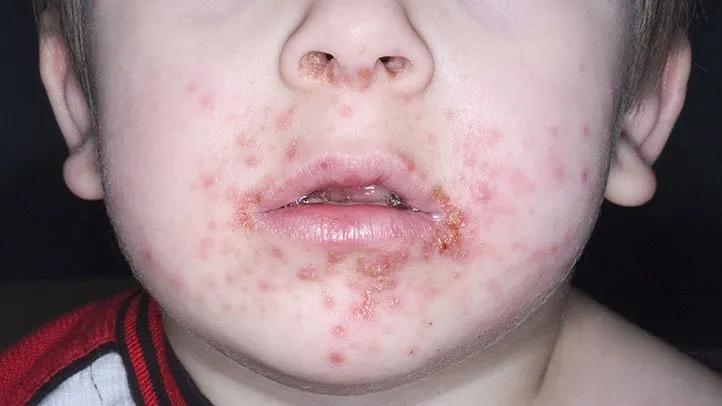Impetigo is a common skin infection caused by 2 types of bacteria

Some people carry these bacteria in their nostrils, on the skin or in the throat. The bacteria can be passed to hands and then onto other parts of your skin.
Most of the time, your skin works as a barrier that keeps bacteria out. Bacteria can live on your body without causing problems. But when there’s a break in your skin (eg, a cut or graze) bacteria can enter your body. It can then grow, causing inflammation and infection.
Breaks in your skin can happen with bites เล่นบาคาร่า UFABET เว็บตรง ค่าคอมสูง (insect, animal or human) or an injury. Impetigo can also happen on healthy skin where there is no break to see.
Impetigo is most common in children. In adults it can happen because of other skin conditions. It’s also more common for people with a weakened immune system to get it.
Impetigo usually starts as little blisters. These break and start to weep, usually pus or sometimes a clearer liquid. The weeping patches usually get larger, then yellow or brownish scabs form. These can burn or itch.
Impetigo can also start from any damaged skin that doesn’t heal and develops a crusty scab. Sometimes it looks like a rash – it can start as a single spot, but if you scratch it, it can spread to other places. You can also get swollen glands (lymph nodes).
- Impetigo can usually be diagnosed by how it looks and a description of how it started. You can see an image below and more images if you search for impetigo on the DermNet site.(external link)
- Sometimes a skin swab is needed if it keeps coming back or doesn’t get better with treatment.
- A swab is also taken if there’s concern that it might be caused by an antibiotic-resistant strain of bacteria (eg, MRSA).
Clean off scabs and crusts
Remove the scab or crusted area by washing with an antiseptic solution, eg, Dettol or Savlon. Follow the instructions on the packaging or ask your pharmacist for advice on how to use them. You can also remove crusts by doing the following:
- Give your child a warm bath for 20 minutes and gently wipe the crusts away with a wet towel. Wash the towel afterwards.
- Make up a mixture of half a cup of white vinegar in a litre of warm water, and lay a cloth soaked in this mix over the sores for about 10 minutes, 3 times a day. Gently wipe off the crusts.